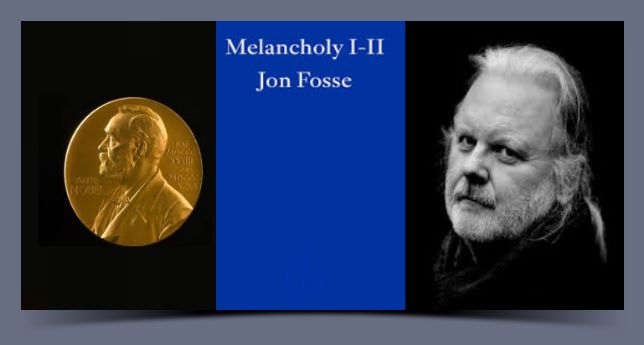Jon Fosse, a renowned Norwegian playwright, draws inspiration from a 19th-century landscape painter, capturing readers' interest as they discover that the story centers around a genuine individual and an esteemed artist from the past. The author delves into Lars Hertervig's mind and thoughts, meticulously exploring the inner world of a troubled artist. In this process, he skillfully guides readers on an introspective journey, dynamically unraveling the complexities that exist within the human mind.
Blend of Fact and Fiction
The story follows Lars Hertervig, a 19th-century Norwegian landscape painter who grappled with mental illness. Hertervig was admitted to Gaustad Asylum near Christiania (now Oslo) on April 5, 1856, and died in obscurity. During his lifetime, Hertervig faced difficulties making a living as an artist and experienced hardships, mental illness, and social isolation. However, after his death in 1902, Hertervig's paintings gained more attention and acclaim. Today, he is considered one of Norway's prominent artists from the mid-19th century, and his famous painting "Kveld" was sold for $787,510 at an auction in 2008.
In Melancholy I-II, Fosse portrays Hertervig and speaks on his behalf, giving him a voice and sharing his experiences and emotions, saying "I am the landscape painter Lars Hertervig, student of Hans Gude himself, trained at the Academy of Art in Düsseldorf. I am an artist, a painter."
Although the novel is biographical and based on a real person's life, it does not heavily rely on his life story. The author skillfully blends historical events with fictional storytelling, blurring the line between reality and imagination. This fusion creates an engaging narrative that captures the essence of the time period while offering a unique perspective through fictional characters. While the author incorporates elements of realism and historical context, his main focus is on exploring existential themes and the inner lives of the characters. The narrative may include historical events, but it is presented from a more introspective and philosophical viewpoint.
Artful Writing Style and Symbolism
One of Fosse's standout qualities is his distinct and artful writing style, exemplified in "Melancholy I-II." His sparse and lyrical prose allows the reader to experience the depths of melancholy through introspective monologues and poetic dialogue. Fosse's writing is marked by the use of repetition, often employing short, declarative sentences that recur throughout the narrative. This repetitive style can be seen throughout "Melancholy I-II" and may be considered excessive in certain parts of the book. For instance, the word "paint" is repeated a thousand times. "Sit" is repeated 27 times in three consecutive pages, and "light" is repeated 15 times on a single page. In the second part of Melancholy I, the word “seagulls” is repeated 60 times on two consecutive pages. Fosse's use of repetition may potentially discourage some readers who prefer a faster-paced narrative with more plot development. However, it is important to recognize that these repetitions may serve multiple purposes, emphasizing key ideas and themes and creating a distinctive rhythm and musicality within the text. Fosse’s writing style is also marked by ambiguity, leading readers to interpret his words in different ways. By intentionally leaving gaps and room for speculation, he invites readers to question the reality portrayed in the narrative and encourages them to fill in the blanks with their own imagination.
Character Development
The human mind is a roller coaster of emotions and thoughts, swinging up and down, fluctuating between feelings of joy and sorrow, self-confidence and doubt, trust and mistrust, courage and fear, moving forward and hesitation. This applies to Fosse's characters in "Melancholy I-II" who are complex and sensitive, driven by their deep-seated emotions and inner conflicts. This is a true reflection of the protagonist, Hertervig, who comes from a poor Norwegian Quaker family and goes to Düsseldorf to study at the Academy of Art. There, he faces his teacher, Hans Gude, who will judge his art. Self-confidence and doubt fluctuate in his mind like waves, rising and receding at different times. Self-doubt washes over his mind, creating a feeling of uncertainty and insecurity: “Today I can’t bear to see Hans Gude. Because what if Hans Gude doesn’t like the picture I’m painting, what if he thinks it’s bad, embarrassingly bad, what if it makes him think that I can’t paint after all.” Then, self-esteem surges like an enormous wave, filling him with a sense of empowerment and assurance: “I don’t want to see Hans Gude. Because I can paint. And Gude can paint. And Tidemann can paint. I can paint. No one can paint like me, just Gude.”
He ultimately resolves to forgo attending the academy, fearing scrutiny and the potential for humiliation. Instead, he ventures towards the artist haven known as the Malkasten, where fellow painters gather to drink and chat.
Jon Fosse’s writing style is known for its ambiguity. He often presents characters whose identities are intentionally ambiguous or undefined. Their backgrounds, relationships, and intentions may be left vague, leaving the readers to interpret and fill in the missing details. For example, the character Helene, a girl he meets in the house where he is a boarder. He becomes sexually obsessed with her but is unsure about her feelings and intentions towards him. His obsession with her is evident throughout the work, with the name “Helene” being repeated 760 times!
Probing the Depths of the Human Psyche
Fosse’s themes of love, loss, longing, and existential despair are carefully interwoven, inviting readers to reflect on their own experiences with melancholy and confront the existential questions that underlie the human condition. However, the central theme of Melancholy I-II remains melancholy and despair. The characters in the book all struggle with a sense of hopelessness and the feeling that their lives are meaningless. Fosse delves deep into the psyche of these characters, exploring their innermost thoughts and emotions with great sensitivity. He portrays the profound grief, loneliness, and desolation that can consume a person’s soul.
The emotional depth in “Melancholy” is particularly evident in the portrayal of the protagonist’s experiences. Readers are immersed in the protagonist’s inner world filled with dark musings and contemplations on love, loss, and the meaning of life. Fosse skillfully captures the nuances and subtleties of human emotions, painting a vivid picture of the complex and often contradictory nature of our inner lives.
The book also explores emotional depth through its exploration of relationships. Fosse examines the intricacies of human connections and the emotions that can arise within them. He delves into the complexities of love, desire, and the longing for connection, offering a nuanced portrayal of the joys and sorrows that accompany human relationships.
Exploration of the Human Condition
This novel can be characterized as a leisurely paced narrative with minimal plot development. As Complete Review aptly noted, "Fosse presents the book in an almost repetitive drone. One might imagine that the first part could be shrunk down to a few pages, as relatively little happens," due to its lack of significant events or progression. It is worth noting that not all readers may find a slow-moving book with a repetitive style to their liking. This style of writing can potentially hinder their engagement and enjoyment of the story.
However, while Melancholy may feature a repetitive narrative structure and slower pacing, it holds certain features that appeal to readers. The combination of biography and fiction in the book makes it unique by blending real-life experiences with imaginative elements, creating a distinct atmosphere, and allowing for a deeper exploration of the human condition. Jon Fosse's writing is undeniably distinctive, immersing itself in the depths of the human psyche and delving into the inner workings of the mind. His unique writing style often embraces ambiguity, conveying a slow, poetic intensity that creates a distinct atmosphere in his works.
Today, "Melancholy I-II" stands as a masterpiece, offering a profound Exploration of the Human Condition and serving as a shining example of Jon Fosse’s unique talent, setting him apart as a prominent contemporary writer.




